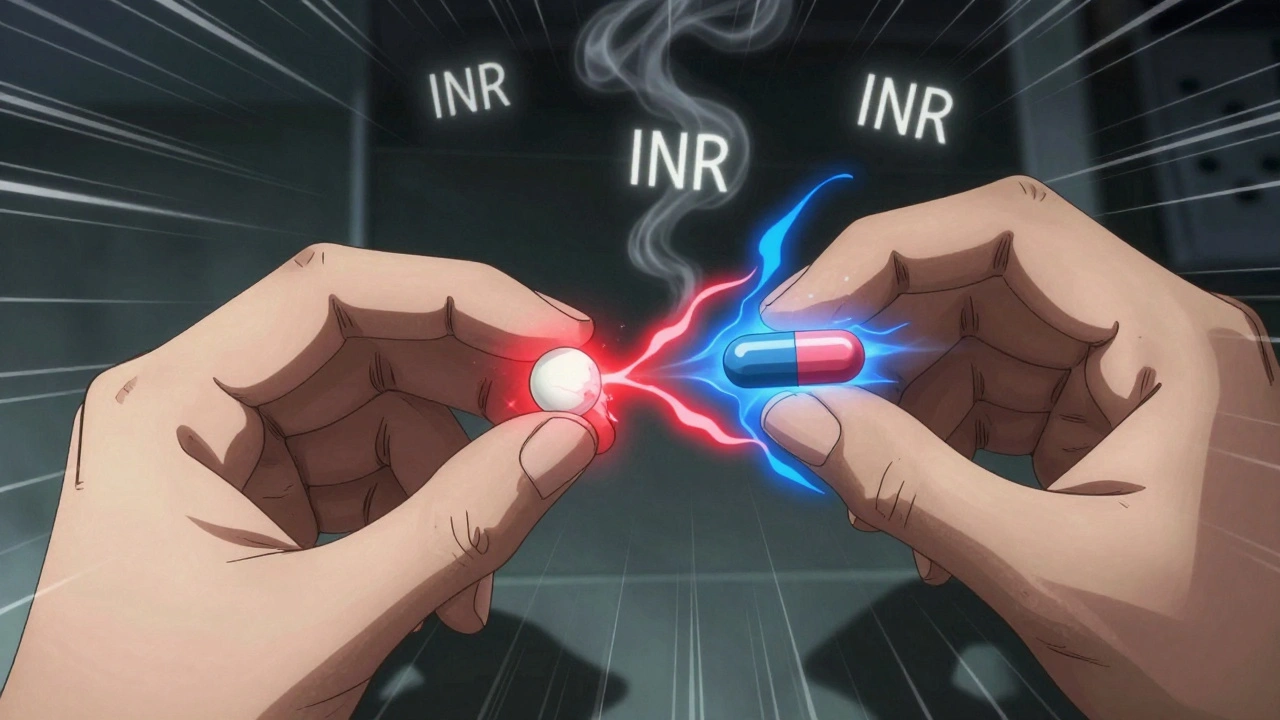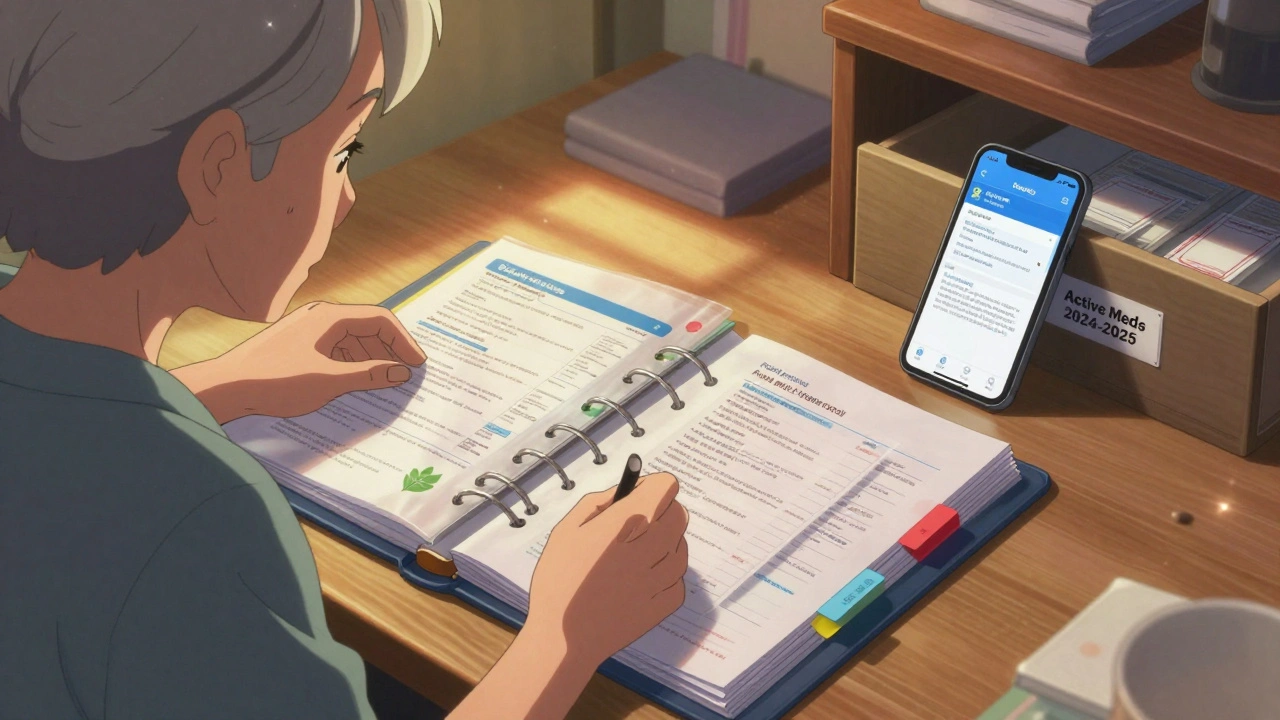Clindamycin and C. difficile Risk: When to Seek Care

C. diff Symptom Assessment Tool
Important Safety Reminder
This tool is for informational purposes only. If you have severe symptoms or concerns, contact your healthcare provider immediately.
Symptom Assessment
Your Results
When you take clindamycin for a tooth infection, a skin abscess, or a respiratory bug, you’re likely focused on getting better. But there’s a quiet, serious risk hiding in plain sight: clindamycin is one of the most dangerous antibiotics when it comes to triggering a life-threatening gut infection called Clostridioides difficile, or C. diff. This isn’t just a case of mild stomach upset. It’s a gut microbiome collapse that can turn deadly if ignored. And the clock starts ticking the moment you swallow that first pill.
Why Clindamycin Is So Risky
Not all antibiotics are created equal when it comes to gut damage. Clindamycin doesn’t just kill the bad bacteria-it wipes out the good ones too, especially the ones that normally keep C. diff in check. Unlike broader-spectrum drugs that hit a wide range of bacteria, clindamycin is narrowly focused on gram-positive bacteria. That sounds precise, but in your gut, that means it clears out the protective flora that act like a fence around C. diff. Once that fence is gone, C. diff takes over, multiplies, and starts releasing toxins that eat away at your intestinal lining. Studies show clindamycin carries the highest risk of C. diff infection among all commonly prescribed antibiotics. A 2019 analysis of over 150,000 patients found it was far more likely to cause C. diff than even vancomycin, ciprofloxacin, or cephalosporins. Even a single dose-like the one given before dental surgery-can be enough to trigger it. The CDC calls this an urgent threat, and for good reason: about 500,000 cases happen every year in the U.S., and nearly half occur outside hospitals, often after outpatient antibiotic use.When Does C. diff Show Up?
Most people assume C. diff only happens while they’re still on antibiotics. That’s not true. The danger window stretches far beyond your prescription. Symptoms can appear:- As early as one day after starting clindamycin
- During the course of treatment
- Up to 12 weeks after you’ve stopped taking it
What Symptoms Mean You Need Help Right Now
Not every loose stool means C. diff. But if you’ve taken clindamycin recently and you notice:- Three or more unformed stools in a 24-hour period for two or more days
- Abdominal cramping or pain that’s new and worsening
- Fever above 101.3°F (38.5°C)
- Blood or pus in your stool
- Signs of dehydration: dry mouth, dizziness, very little urine output

Who’s at Highest Risk?
Some people are more vulnerable than others. If you’re over 65, have a weakened immune system (from cancer treatment, steroids, or chronic illness), have had C. diff before, or have kidney problems, your risk jumps significantly. In these cases, doctors recommend acting even faster: if you have two or more unformed stools in 24 hours, call your provider-don’t wait 48 hours. Even if you’re young and healthy, don’t assume you’re safe. A 2022 study from the University of Michigan found patients who waited more than 72 hours to get help were more than twice as likely to need surgery to remove part of their colon. And their death risk was four times higher.What Happens If You Delay Care
C. diff doesn’t just cause diarrhea. In severe cases, it leads to toxic megacolon-your colon swells and can rupture. Or it triggers sepsis, where your body’s response to infection starts shutting down organs. These aren’t rare outcomes. They’re preventable ones-if you act early. The treatment for severe C. diff involves strong antibiotics like vancomycin or fidaxomicin, and sometimes surgery. But if you wait too long, those treatments may not be enough. Fidaxomicin has a lower recurrence rate than vancomycin (15% vs. 25%), but it only works if you start it before your infection spirals out of control.What to Do If You’re Prescribed Clindamycin
Ask your doctor: “Is there a safer alternative?” For many common infections-like skin abscesses or dental infections-there are better choices. Trimethoprim-sulfamethoxazole, doxycycline, or even amoxicillin (if you’re not allergic) carry much lower C. diff risk. Clindamycin should be a last resort, not a default. If you must take it:- Take it exactly as prescribed-don’t skip doses, don’t extend it
- Watch for symptoms every day, even after you finish the course
- Stay hydrated. Drink water, broth, or oral rehydration solutions
- Don’t take anti-diarrhea meds like loperamide (Imodium). They trap toxins in your gut and make things worse
- Keep a symptom log: number of stools, pain level, fever, appetite

What’s New in C. diff Treatment
There’s real hope on the horizon. In 2023, the FDA approved a new treatment called VOWST-a pill made of bacterial spores from healthy donor stool. It’s not a transplant; it’s a standardized, FDA-approved microbiome reset. Early data shows it cuts recurrence rates dramatically. Researchers are also testing new antibiotics like ridinilazole, which targets C. diff without wiping out other gut bacteria. In trials, it cut recurrence rates by nearly half compared to vancomycin, especially in patients who’d taken clindamycin.Bottom Line: Don’t Ignore the Signs
Clindamycin saves lives. But it can also take them if you don’t know the warning signs. If you’ve taken it in the last three months and you’re having diarrhea, cramps, or fever-call your doctor. Don’t wait. Don’t Google it. Don’t hope it goes away. C. diff doesn’t get better on its own. It gets worse. Fast.The best defense isn’t avoiding antibiotics altogether-it’s knowing when to question them, and when to act on symptoms. Your gut health matters. And sometimes, the most important thing you can do after taking an antibiotic is to listen to your body-and speak up.
Can clindamycin cause C. diff even after I stop taking it?
Yes. C. diff symptoms can appear up to 12 weeks after you finish clindamycin. The highest risk is within the first week after stopping the drug, but cases have been reported months later. This is why you should stay alert for diarrhea, cramping, or fever even after your prescription ends.
Is C. diff contagious?
Yes. C. diff spreads through spores in feces. If you have diarrhea, spores can contaminate surfaces, toilets, and hands. Wash your hands with soap and water (alcohol-based sanitizers don’t kill spores), and clean surfaces with bleach-based cleaners. Avoid close contact with others until symptoms resolve.
Should I take probiotics to prevent C. diff while on clindamycin?
There’s no strong evidence that over-the-counter probiotics prevent C. diff. Some strains, like Saccharomyces boulardii, show modest benefit in studies, but results aren’t consistent. Don’t rely on them. The best prevention is avoiding clindamycin when safer options exist, and watching for symptoms.
What tests are used to diagnose C. diff?
Doctors usually test stool samples for C. diff toxins or the bacteria’s genetic material. The most common test is the PCR test, which detects the toxin-producing gene. A positive test plus symptoms like diarrhea confirms the diagnosis. Imaging or colonoscopy may be used in severe cases to check for complications like toxic megacolon.
Can I get C. diff more than once?
Yes. About 20% of people who have one C. diff infection get another. The risk increases with each recurrence. If you’ve had it before, you’re at higher risk if you take antibiotics again. Always tell your doctor about your history-it changes how they choose your treatment.
Is there a vaccine for C. diff?
Not yet. Several vaccines are in clinical trials, including ones targeting the toxins C. diff produces. But none are approved for public use. Prevention still depends on smart antibiotic use and early symptom recognition.
What should I avoid if I suspect C. diff?
Avoid anti-diarrheal medications like loperamide (Imodium), as they slow gut movement and trap toxins. Avoid unnecessary antibiotics. And don’t ignore symptoms just because you think you’re "not sick enough." C. diff can escalate quickly. Call your provider at the first sign of trouble.
What Comes Next
If you’ve had C. diff once, your doctor may recommend avoiding clindamycin and other high-risk antibiotics in the future. Keep a personal antibiotic history-write down what you’ve taken and when. Share it with every provider you see. If you’re due for surgery or a dental procedure, remind them about your history. There are safer alternatives for most infections now.And if you’re a caregiver for someone older or immunocompromised, watch for subtle signs: less appetite, fatigue, mild cramping, or a change in bowel habits. They might not say they feel sick-but their body is sending signals. Listen.
C. diff isn’t inevitable. It’s preventable-with awareness, questions, and quick action. Your next antibiotic doesn’t have to be a gamble. Know the risks. Know the signs. And don’t wait until it’s too late.






Comments
Andrew McAfee
November 22, 2025 AT 16:00Clindamycin gave me C. diff after a wisdom tooth extraction. Thought it was just food poisoning. Ended up in the ER with a fever of 103. Never take it again unless you’re literally dying. And even then, ask twice.
Andrew Camacho
November 23, 2025 AT 09:08Let’s be real-pharma doesn’t care if you get C. diff. They make billions off the antibiotics AND the treatments. Clindamycin is a Trojan horse wrapped in a prescription. The system is rigged. They know this risk. They just don’t tell you until it’s too late. And then they slap a warning label on it like that fixes everything. Wake up.
Elise Lakey
November 24, 2025 AT 20:18I’ve been on clindamycin twice. The first time, I got mild diarrhea and just took Imodium. The second time, I read this post and called my doctor at the first sign of loose stools. Turned out to be C. diff. They caught it early. I’m alive because I listened. Thank you for writing this.
prasad gaude
November 25, 2025 AT 14:32In India, we don’t think twice before taking antibiotics. A cough? Antibiotic. Toothache? Antibiotic. Fever? Antibiotic. No one checks if it’s the right one. This post is a wake-up call for my country too. We need education, not just pills. The gut is sacred. Don’t destroy it for a quick fix.
Timothy Sadleir
November 26, 2025 AT 18:13Who authorized this drug? Who approved it? There’s a pattern here-big pharma, FDA, doctors all in bed together. C. diff isn’t an accident-it’s a profit-driven outcome. They know 20% of patients will relapse. They know fidaxomicin costs $3,000 a course. They know hospitals bill for surgeries. This isn’t medicine. It’s a financial ecosystem built on suffering.
Karen Willie
November 27, 2025 AT 13:05If you’re reading this and you’ve taken clindamycin recently-please, just pay attention to your body. Don’t dismiss it. I’m not a doctor, but I’ve seen what happens when people wait. Your gut is trying to tell you something. Listen before it screams.
Amy Hutchinson
November 28, 2025 AT 17:51Wait so if I took clindamycin for a zit last year and now I have loose stools… am I doomed? Should I be panicking? I’m just saying I’m kinda freaked out now.
Archana Jha
November 29, 2025 AT 20:47They say probiotics dont work but i read on a forum that if you take saccharomyces boulardii with clindamycin it stops c diff 90% of the time so why arent doctors telling us this?? also i think the government is hiding the truth about fecal transplants because big pharma hates them
Aki Jones
November 30, 2025 AT 08:10Clindamycin-induced C. diff is not an 'unintended consequence'-it's a predictable, documented, statistically significant outcome. The FDA's own data confirms a 15-20x higher relative risk compared to amoxicillin. And yet, it remains a first-line therapy for dental abscesses. This is malpractice by protocol. The medical-industrial complex prioritizes speed, cost-efficiency, and inertia over patient safety. The evidence is overwhelming. The silence is complicity.
Jefriady Dahri
November 30, 2025 AT 12:44Bro, I had C. diff after clindamycin for a boil. I thought I was just sick from bad tacos. I almost died. Now I carry a card in my wallet that says 'ALLERGY: CLINDAMYCIN'. I tell every doctor I meet. Please, if you're reading this-ask for alternatives. Your gut will thank you. 🙏
Sharley Agarwal
December 1, 2025 AT 01:02People don’t understand. This isn’t a bug. It’s a feature. The system wants you sick. More pills. More tests. More bills. You’re a customer. Not a patient.
Shirou Spade
December 1, 2025 AT 01:46There’s a deeper question here: Why do we treat the body like a battlefield? Antibiotics are weapons. But we forget that the gut is a garden. You don’t burn down a garden to kill one weed. You nurture the soil. Maybe we need to stop thinking about killing bacteria-and start thinking about restoring balance.
Ellen Sales
December 2, 2025 AT 09:06I’m a nurse. I’ve seen patients come in with C. diff after clindamycin. One woman-78, diabetic, on steroids-got it after a root canal. She didn’t even know she’d taken it. The doctor didn’t warn her. She lost 30 pounds. Had a colectomy. I’ve cried in the break room over this. Please, if you’re prescribed this-ask: Is this necessary? Is there another way? I beg you.
Josh Zubkoff
December 3, 2025 AT 21:03Let’s talk about the real villain here: the lazy doctor who reaches for clindamycin because it’s cheap, fast, and they don’t have to think. You think they read the 2019 meta-analysis? Nah. They remember that one time it worked for a patient with a sinus infection back in 2012. That’s their entire evidence base. And now you’re the guinea pig. You’re not a patient-you’re a statistical outlier waiting to happen. And when you get C. diff? They’ll say, 'Oh, that’s just a known risk.' No. It’s negligence dressed up as standard of care.
fiona collins
December 4, 2025 AT 17:45Thank you for this. I’m from New Zealand-we don’t have the same antibiotic overuse, but it’s creeping in. I’ll share this with my elderly mum. She’s on antibiotics now for a UTI. I’m asking her doctor about alternatives tomorrow.
Rachel Villegas
December 6, 2025 AT 00:50I’m so glad this was posted. I took clindamycin for a skin infection last year and had diarrhea for three weeks. I thought it was stress. I didn’t connect it. Now I know. I’m telling everyone I know.
Emily Craig
December 6, 2025 AT 05:06So let me get this straight-you’re telling me the thing that was supposed to fix my toothache almost killed me… and my doctor didn’t even mention it? Thanks for the heads up. I guess I’ll just go ahead and trust the next doctor who says 'it’s fine'… NOT